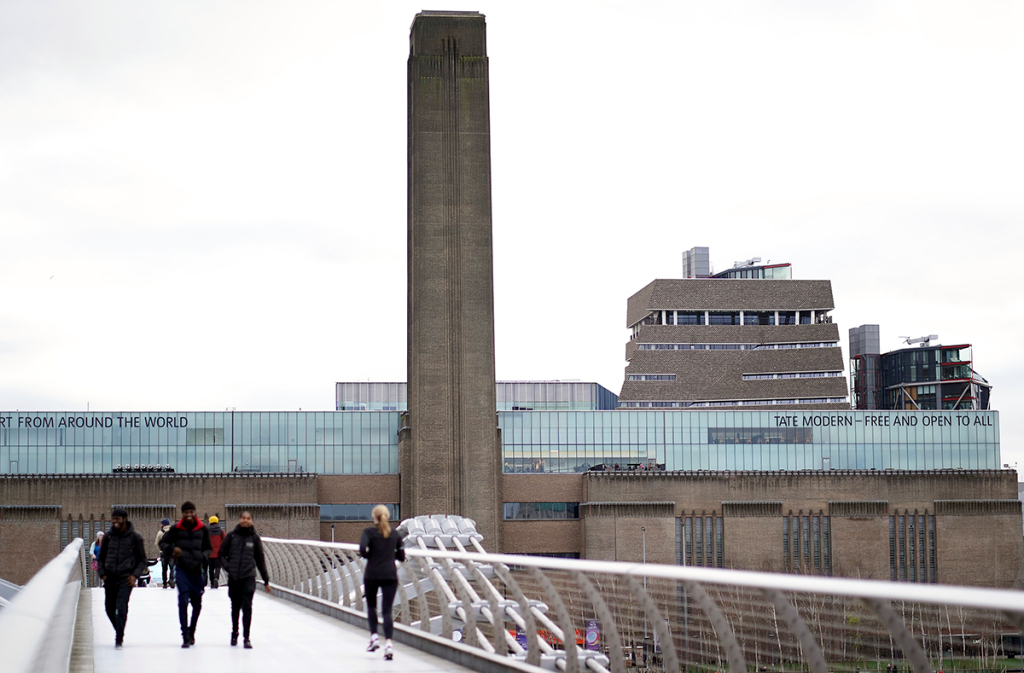ART WORLD NEWS
Tate Modern’s Neighbors Will Take Privacy Lawsuit to U.K. Supreme Court
After losing an appeal that would force Tate Modern to close a portion of its 360-degree viewing gallery, owners of four units in a nearby luxury building will take their case to the Supreme Court of the United Kingdom. The case is expected to be heard later this year.
The Board of Trustees of the Tate Gallery, which were the defendants in the original case, learned that the case was to be appealed in January, according to the minutes of a trustee meeting that was verified by the Art Newspaper, which first reported the news. According to the U.K. Supreme Court’s Permission to Appeal documents for October/November 2020, the appeal was granted in part on November 4.
Related Articles
The Court of Appeal, which ruled in favor of Tate Modern, had initially refused permission for an appeal, but the Supreme Court ultimately decided to allow it to proceed. The case will be heard by Lord Lloyd-Jones, Lord Kitchin, and Lord Leggatt. (In the United Kingdom, most cases are heard by only a panel of three justices as opposed to the full 12 membership.)
The residents of Neo Bankside building against the Tate trustees sought an injunction to close the southern portion and parts of the western portion of Tate Modern’s 10th-floor viewing gallery, which offers 360-degree views of London. The 10th-floor gallery is part of the Blavatnik Building expansion that opened in 2016. According to the Court of Appeal’s ruling, the planning for the Blavatnik Building began in 2006, the same year that the planning for the Neo Bankside building began. Neo Bankside opened in 2012.
The residents who brought the suit alleged that “hundreds of thousands of visitors” to Tate Modern had been able to look into their units, often waved to them, and took photos and videos that were subsequently posted to social media. To remedy this, Tate Modern posted signs asking visitors to respect their neighbors’ privacy, instructed security guards to stop people from taking photos that looked into the Neo Bankside flats, and closed portions of the 10th-floor viewing gallery on evenings.
Still, the five Neo Bankside residents, whose flats are on the 13th, 18th, 19th, and 21st floors of the building, brought a suit that sought to either permanently cordon off sections of Tate Modern’s 10th-floor viewing gallery or to install barriers that would prevent people from looking in. In 2019, Mr. Justice Mann dismissed the suit, ruling in favor of Tate Modern. The residents then appealed the decision; a panel of three justices for the Court of Appeal ruled in favor of Tate Modern in February 2020.
In their judgment, the three justices—Sir Terence Etherton MR, Lord Justice Lewison, and Lady Justice Rose DBE—said, “The case, and this appeal, raise important issues about the application of the common law cause of action for private nuisance to overlooking from one property to another and the consequent invasion of privacy of those occupying the overlooked property.”
But they ultimately decided to uphold Mann’s decision, saying, “Familiar images of cheek-by-jowl buildings in cities such as London in the medieval and early modern period show that overlooking was commonplace and indeed inevitable when the great cities were being constructed,” adding that “mere overlooking is not capable of giving rise to a cause of action in private nuisance.”











